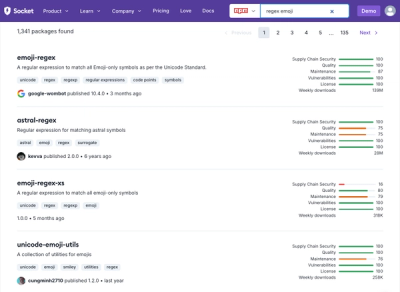
Research
Security News
Malicious npm Package Targets Solana Developers and Hijacks Funds
A malicious npm package targets Solana developers, rerouting funds in 2% of transactions to a hardcoded address.
wordpress-firebase-auth-bridge
Advanced tools
API endpoint allowing users to authenticate in Firebase using Wordpress details.
This is an API endpoint which is used by BRCS - Bot Remote Control System.
It allows to authenticate users in Firebase with Wordpress details (using jwt).
If user doesn't exist in Firebase it will be created first and then authenticated.
It works one-way-only so it creates and authenticates users from Wordpress in Firebase (doesn't work vice-versa yet).
In general what I wanted to achieve and what I actually achieved using this:
Wordpress Woocommerce online shop and wanted users from mobile app to have exactly the same authentication database as users from online shopWordpress database, but users using mobile app were authenticated by Wordpress first, then "copied" over to Firebase auth and then logged in to mobile app using Firebase SDKYou are thinking.. why not Wordpress only? Because I love Firebase features for mobile apps!
pm2 for auto-restarting, deployment and auto-scaling404 for bots and crawlers)cloudflare protection/fb/status => GET/fb/auth => POST => format: {"username":"test","password":"test"}WP REST API V2 enabledI will be honest here. There may be some steps missing so you will have to figure it out yourself (I've stopped using it because mobile app which uses it is not developed anymore).
npm install --g babel-cli pm2npm install./keys/server.crt && ./keys/server.key => generate your own keys./serviceAccountKey.json => get whole file from Firebase project./newrelic.js./ecosystem.config.js./dev_ecosystem.config.js./settings.js./package.json => modify name of your app (if changed) in pre-defined commandspm2 on your deployment machine (pm2 link)pmx monitor on deployment machine:
(keep in mind that each of these has to be configured separately, also some of them are useless if you're not going to run Wordpress on same machine with Login API)
pm2 install pm2-server-monitpm2 install pm2-php-fpmpm2 install pm2-memcachedpm2 install pm2-mysqlpm2 install pm2-slackpm2 install pm2-logrotate2096 for API and 43554 for pmx monitor in my case)cloudflare caching (somewhere on theirs website in domain settings)pm2 deploy ecosystem.config.js dev setuppm2 deploy ecosystem.config.js prodpm2 saveYou can do all these steps above with one command npm run pm2devcleandeploy
or if you already did setup you can do npm run pm2devdeploy.
You can also remotely destroy already running instances with: npm run pm2devdeploydestroy
and read logs using npm run pm2devdeploylogs or clean them up with npm run pm2devdeploycleanup.
FAQs
API endpoint allowing users to authenticate in Firebase using Wordpress details.
The npm package wordpress-firebase-auth-bridge receives a total of 2 weekly downloads. As such, wordpress-firebase-auth-bridge popularity was classified as not popular.
We found that wordpress-firebase-auth-bridge demonstrated a not healthy version release cadence and project activity because the last version was released a year ago. It has 1 open source maintainer collaborating on the project.
Did you know?

Socket for GitHub automatically highlights issues in each pull request and monitors the health of all your open source dependencies. Discover the contents of your packages and block harmful activity before you install or update your dependencies.

Research
Security News
A malicious npm package targets Solana developers, rerouting funds in 2% of transactions to a hardcoded address.

Security News
Research
Socket researchers have discovered malicious npm packages targeting crypto developers, stealing credentials and wallet data using spyware delivered through typosquats of popular cryptographic libraries.

Security News
Socket's package search now displays weekly downloads for npm packages, helping developers quickly assess popularity and make more informed decisions.